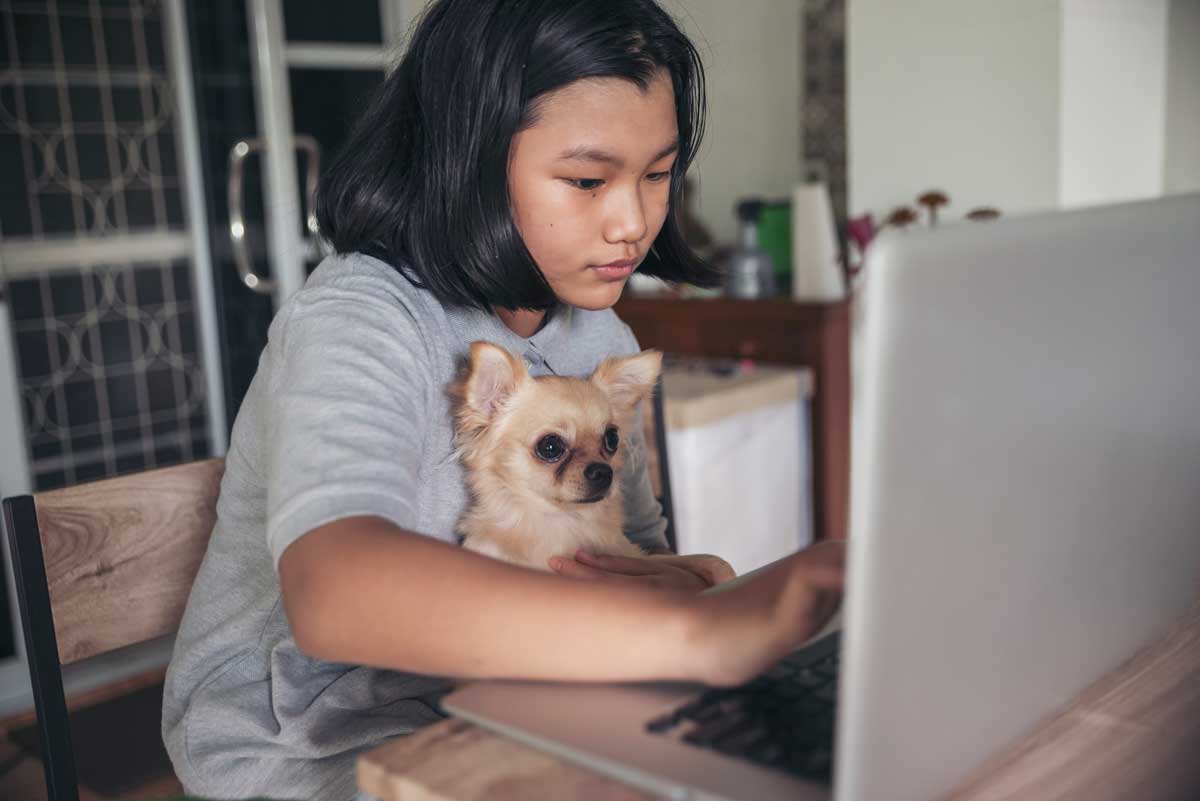
Adolescents’ relationships with their pets can be very important, since adolescents are at a developmental stage when they’re relying less on their families and more on other relationships in their lives—both human and animal. Yet most research on pet companionship focuses on adults and young children. Senior Research Scientist Linda Charmaraman, Ph.D., of the Wellesley Centers for Women recently co-authored an article examining teens’ relationships with their pets through the perspectives of their parents.
“Pets may play a uniquely important role in the context of the COVID-19 pandemic, when adolescents have experienced social isolation and disruption to routines due to school closures and lockdowns,” said Charmaraman. “But we know relatively little about family dynamics around pets, and this study is a step toward better understanding.”
The article, co-authored by Wellesley College students Stephanie Cobas, Jules Weed, Quan Gu, Elizabeth Kiel, and Holly Chin, WCW Research Associate Alyssa Gramajo, and Megan K. Mueller, Ph.D., assistant professor at the Cummings School of Veterinary Medicine at Tufts University, was published this month in the journal Behavioral Sciences.
The research team interviewed 31 parents/guardians in the Northeast U.S. to explore their perceptions of the benefits and challenges of having pets for their adolescent’s wellbeing as well as how adolescents affected their pet’s wellbeing.
The three main themes for perceived benefits of pets included social (e.g., reducing anxiety), physical (e.g., screen time companionship), and emotional (e.g., regulation of difficult emotions such as anger and loneliness). Challenges to adolescent wellbeing included such social topics as family tension around unevenly shared responsibilities, physical themes such as problematic animal behaviors, and emotional themes related to grieving the passing of pets.
“One overlooked context in research is the role that pets play in the use of screens,” said Charmaraman. “In our study, parents observed that pets would often be a reason for their children to choose to spend time off of screens (e.g., exercising outdoors) or be a source of bonding on social media (e.g., TikTok videos). Pets were also used for emotional comfort during remote learning classes and when experiencing distressing content online. On the other hand, pets could be distracting and disruptive when it came to online learning.”
Funded by the National Institutes of Health, the study is part of a collaborative project between the Cummings School of Veterinary Medicine at Tufts University and the Youth, Media & Wellbeing Research Lab at the Wellesley Centers for Women. The aims of the project are: 1) to longitudinally assess if the quality of youths’ relationships with their pets is predictive of healthy adolescent behaviors, and 2) to assess how parents influence the ways in which pets are integrated into the family system.
Previous articles to come out of this project have focused on the role of pet companionship in online and offline social interactions and companion animal relationships and adolescent loneliness during COVID-19.
May 23, 2022

